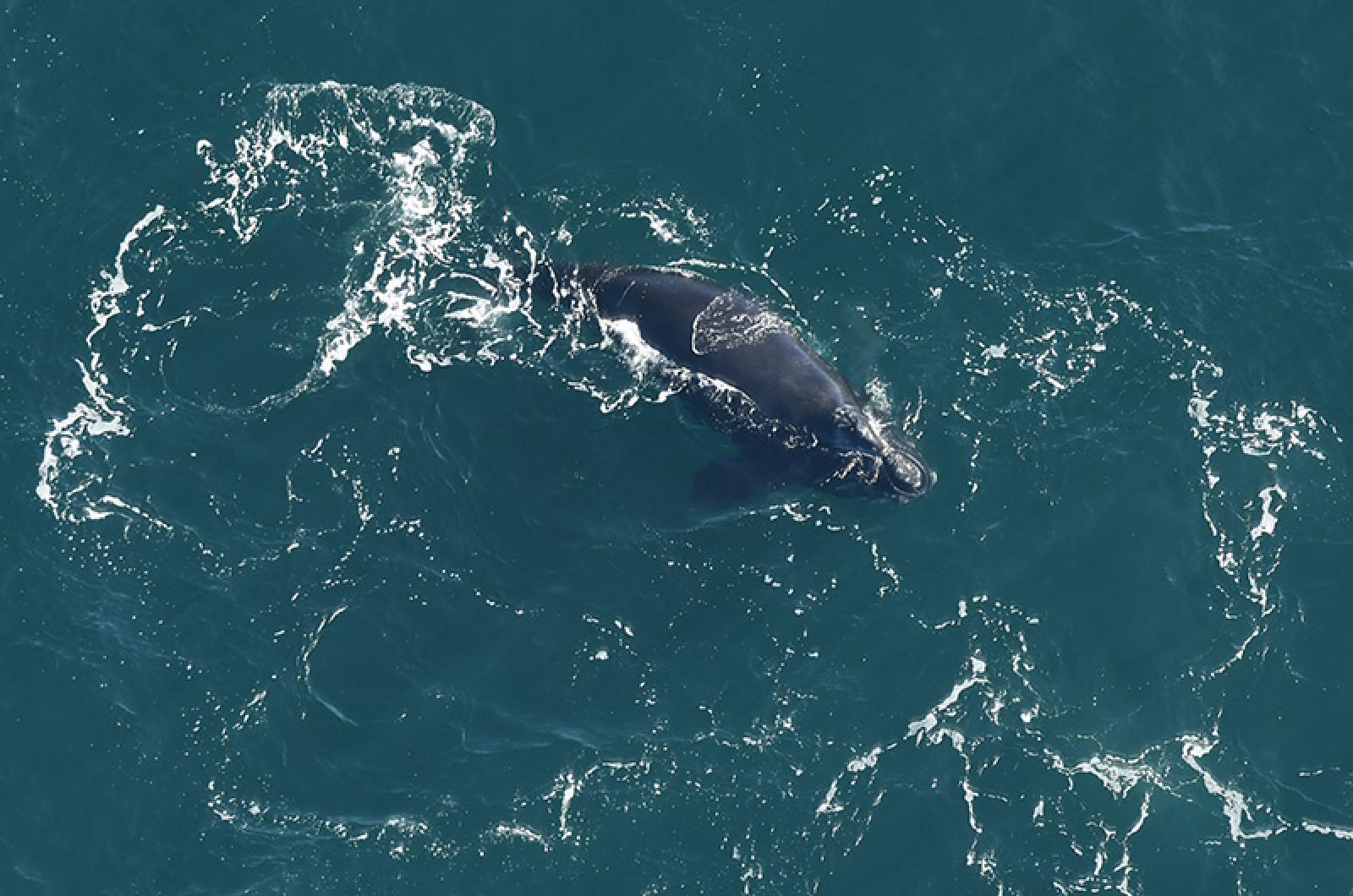Critically endangered North Atlantic right whales are increasing their presence in waters south of Martha’s Vineyard, according to a recent study, including large swaths of ocean slated for wind energy development.
Conducted by scientists with the New England Aquarium, NOAA Fisheries and the Center for Coastal Studies using aerial survey data from 2011 through 2019, the study found that 327 unique right whales have been spotted in the waters of southern New England, making the area a crucial habitat for a species teetering on the edge of extinction.
Scientists estimate the North Atlantic right whale population at less than 400 total specimens, including approximately 100 breeding females.
Meanwhile, the study comes just as the country’s first industrial-scale offshore wind farm, Vineyard Wind 1, has cleared federal approvals and is scheduled to go online by 2023, jump-starting a nascent offshore wind energy industry that could lead to the construction of hundreds of underwater wind turbines in the region.
According to Vineyard Wind, the project will include 64 turbines approximately 15 miles south of Martha’s Vineyard. Additional leaseholders in the area, including Mayflower Wind and a second Vineyard Wind project, would significantly increase turbine counts.
In the study, scientists noted that the presence of right whales has been sighted in the area south of the Vineyard every month in recent years, with large aggregations occurring during the winter and spring.
Between December and May, almost a quarter of the right whale population may be present in the region, and the individual residence time for whales has increased to 13 days during the period, the study states. Visual and acoustic monitoring, from flight surveys and photography, showed consistent use of the wind energy area by a third of the species, including 30 per cent of breeding females.
The study was funded by the Bureau of Ocean Energy Management, the federal agency responsible for permitting offshore wind development, as well as the state Clean Energy Center.
Tim Cole, a co-author of the study and leader of the whale aerial survey team at the Northeast Fisheries Science Center, said in a statement that continued studies were crucial considering the increased presence of the species in the area.
“Since a number of large commercial offshore wind energy projects are proposed off southern New England, construction and operation of wind farms are relevant to conserving the species,” Mr. Cole said. “Considerable uncertainty still exists regarding how the development of the region could have an impact on right whales just as they are becoming more reliant on the region.”
In an email to the Gazette, a Vineyard Wind spokesman said the company would continue to work hand in hand with regulators to protect the species.
“This report is based on science that we have been engaged in and following closely for years and this information is included in our project mitigation,” spokesman Andrew Doba said. “We have and will continue to support the application of good science throughout the development and operation of this first project and future projects.”
First documented in southern New England waters in April of 2010, little was known about the presence or migration patterns of right whales prior to last decade. But even as their overall numbers have declined, scientists have noticed an uptick in their presence south of the Island, considering it an important feeding ground, socializing habitat and through-way as the whales travel south to breed or north for the summer months.
Scientists noted that offshore wind development could impact the whales in a variety of ways, including an increase in vessel traffic — one of the leading causes of right whale deaths — as well as increased ocean noise and habitat alterations, potentially affecting plankton populations.
In 2019, Vineyard Wind signed an agreement with leading conservation groups that, among other things, requires the company to curtail turbine construction during winter and early spring when right whales may be present in the region, as well as dampen construction noise and undertake a comprehensive whale monitoring program.
But with the recent study, scientists pushed for continued mitigation efforts, and in the report emphasized the importance of balancing offshore wind development with right whale migratory needs.
“Implementing mitigation measures by all companies holding leases will be crucial, and should be adapted and reevaluated continually in relation to the whales’ use of the area,” Mr. Cole said in the statement. “Given the large-scale shifts that the species is experiencing, a variety of studies will be needed to understand potential changes in right whale distribution patterns and to inform appropriate strategies for future wind energy development.”







Comments (11)
Comments
Comment policy »